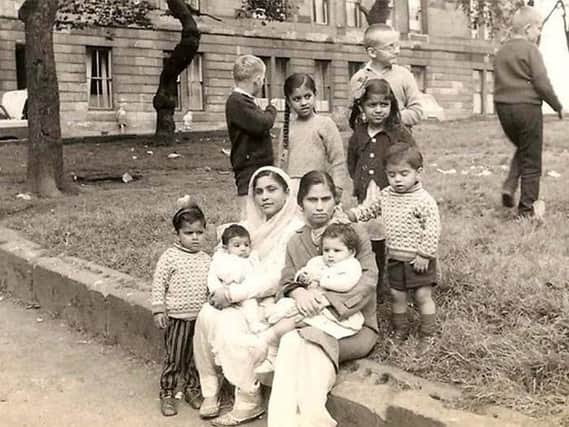Meet the GlaswegAsians, the early migrants who helped shape the city


Today, there are more than 50,000 South Asians in Glasgow with the community now a well-known part of Scottish society. Originally coming more than half a century ago from present day Pakistan, Bangladash and India, almost all of the early arrivals came to the Gorbals area as economic migrants with just a few pounds in their pocket and no English language skills.
They very often created their own jobs as pedlars, selling garments door to door from a suitcase, usually in remote locations in order to provide a service to the public.
Advertisement
Hide AdAdvertisement
Hide AdOne such gentleman was Yaqub Ali who came to Glasgow in 1952 and started working as a pedlar. These jobs helped to improve their linguistic and social skills thus helping them to open up other self-employed businesses and take up other professions.


As they learned to continuously adapt and innovate, many went on to open their own businesses . Shops and restaurants were popular ventures. In 1970, the nation’s favourite curry – Chicken Tikka Masala – was invented by the hugely popular Shish Mahal restaurant in Glasgow.
In 1982 Mr. Nawab Din opened the first purpose-built Cash & Carry called D&D wholesale (now known as ABS).
And Yaqub Ali, the man who arrived in Glasgow in 1952 and worked as a pedlar, opened Castle Cash & Carry in the Gorbals in 1983.At the time, this was the largest wholesale warehouse in the whole of Europe.


Mr Ali also donated the largest single amount of £500,000 to Strathclyde University in 1997 to fund oversees students from Pakistan.
This was followed by several ‘first’ achievements giving rise to the UK’s first Muslim Councillor, Bashir Maan in 1970 and UK’s first Muslim MP Mohammed Sarwar in 1997.
These pioneers paved the way in 1994 for the first female Justice of Peace, Mrs Farkhanda Chaudhry.


In 1933 Mr. Atta Ashrif setup the first Muslim Association (Jamiat ul Muslimin) in Glasgow. The aim was to help fundraise to establish Glasgow’s first mosque. It took over a decade, but in 1944 the first converted mosque opened at 27 Oxford Street, Gorbals.
Advertisement
Hide AdAdvertisement
Hide AdYou might think the top floor of a tenement is an an unusual site for a place of worship. But in 1954, the first Sikh Gurdwara was created in 79 South Portland Street, Gorbals.
In 1979, a prominent member of the community Mr. Fateh Mohammed Sharif laid the foundations of the first ever purpose-built Glasgow Central Mosque in the Gorbals. By 1984 the Glasgow community helped to fundraise for the completion of Glasgow Central Mosque. This forged their identity in Glasgow.
We might think that international signings in football are a relatively new phenomenon. But did you know that in 1936 Celtic FC recruited a player from India? Abdul Saleem from Kolkata came to Glasgow to play for the club. He regularly played barefooted wearing only bandages as this was normal practice for Indians in India.


In 1979 the first Scottish Asian Ikhwan football team was set up in Glasgow. Maqbool Ahmed managed the side who were described by contemporary news reports as “ever-so-polite”.
More recently, two of Glasgow’s young South Asian women have done us proud. Aminah Din is a footballer who and a fully trained Scottish Football Association coach. In 2015 she was awarded ‘role model of the year’ at the Scottish women in sports awards and was a finalist for a Young Scot Award in 2016.
In recent years Abtaha Mahin Maqsood has been selected to play professional women’s cricket for Scotland. Abtaha is off to Spain with the Scottish team for the ICC Women’s Qualifier Europe later this month. We wish them good luck!
Dr Razzaq said: "Colourful Heritage is the first and largest community heritage focused charitable initiative in Scotland aiming to capture and to celebrate the contributions of early South Asian and Muslim communities that came to Scotland more than half a century ago..
"The Asian community has added so much vibrancy, culture and diversity into the Scottish society. They have contributed to Scotland’s society and economic landscape by providing shops, businesses and restaurants. The Scottish palette has forever changed and refined with the variety of authentic curry houses present in Scotland."
Advertisement
Hide AdAdvertisement
Hide AdColourful Heritage has been actively documenting a collection oflstories and personal accounts told by the participants themselves, to create a highly unique and fascinating online video archive which can be viewed at www.colourfulheritage.com.
This article first appeared on the Historic Environment Scotland blog.